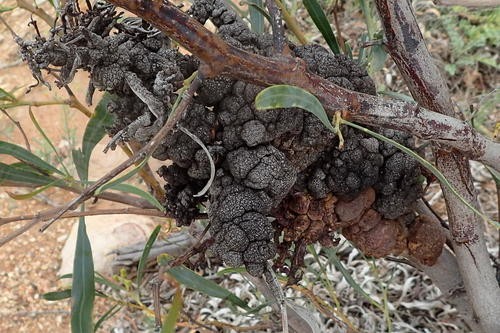Uromycladium
Scientific name: Uromycladium
Uromycladium
Scientific name: Uromycladium
 Photo By nicky , used under CC-BY-SA-4.0 /Cropped and compressed from original
Photo By nicky , used under CC-BY-SA-4.0 /Cropped and compressed from original Description
Uromycladium is a fascinating group known for its striking appearance on acacia trees, forming distinctive galls that can affect the plant's growth. Several species within this group are recognized for their role in the ecosystem, serving as plant pathogens. One unique fact is that these organisms have a complex life cycle involving different host plants to complete their development. Their intriguing interactions with plants make them a subject of interest in mycology and plant pathology studies.